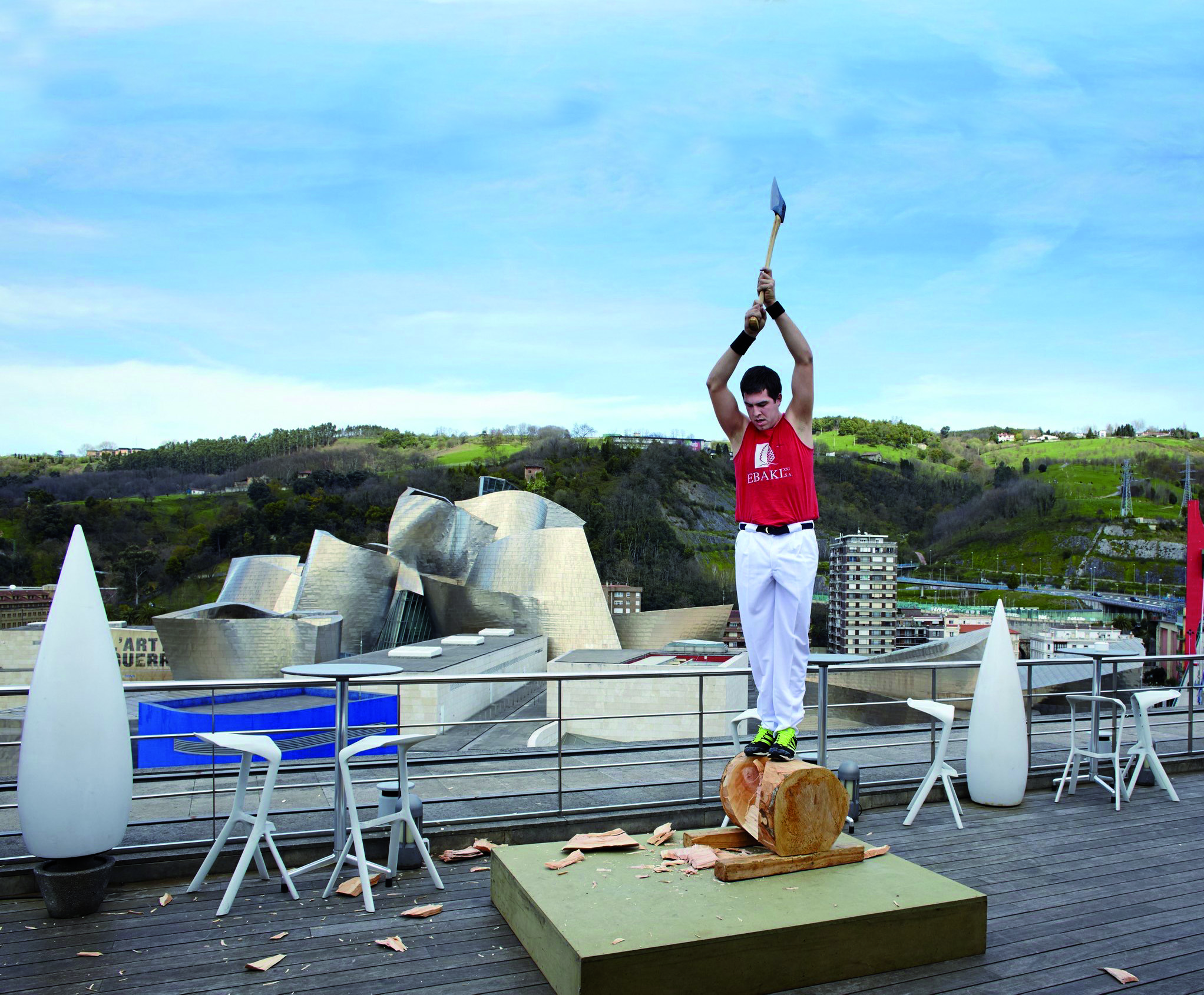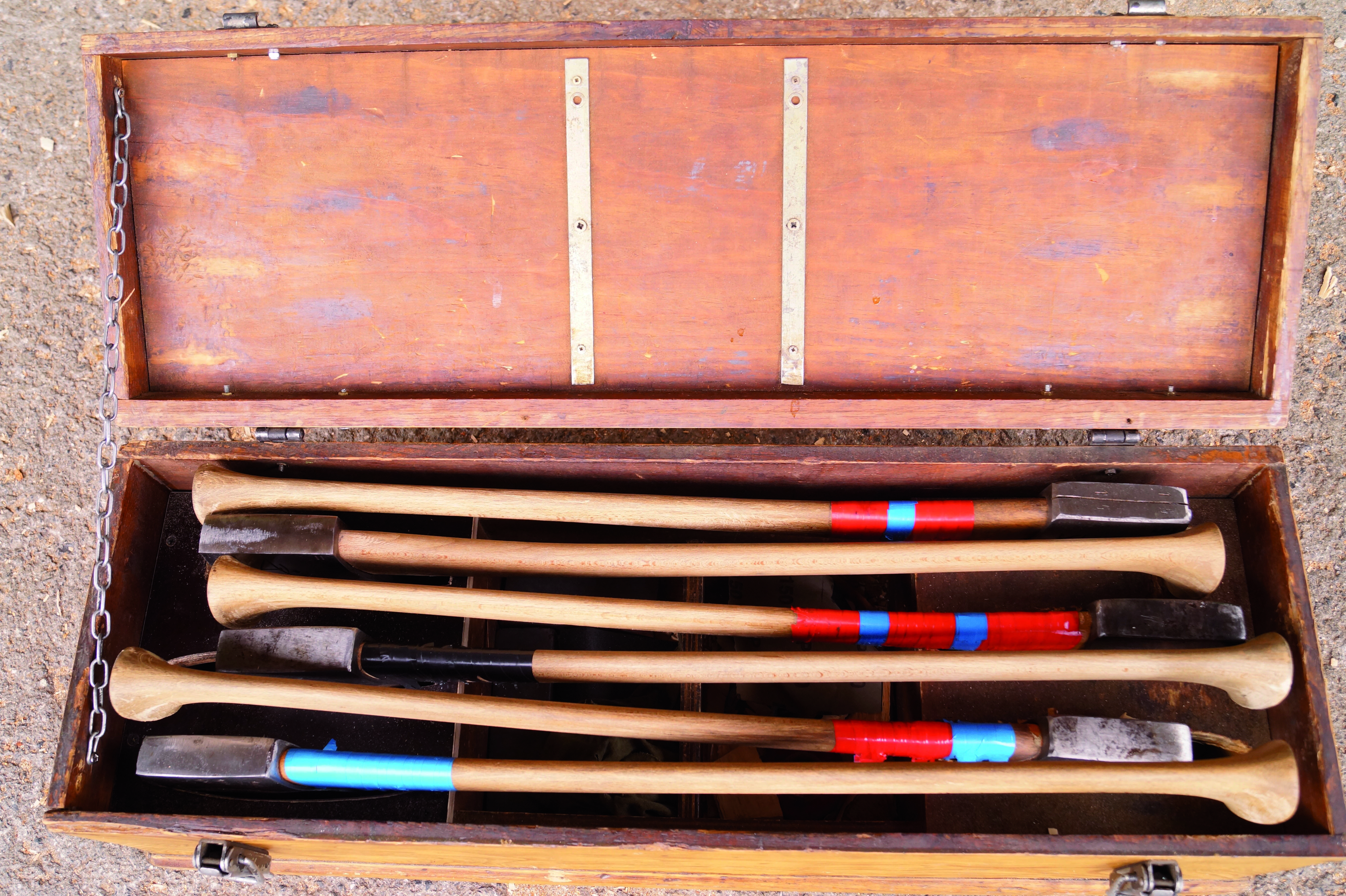
Atutxa is a sight to behold as he stands on an enormous beech trunk, swinging his axe and chopping away, timber chips piled high between his feet. With a razor sharp steel axe head weighing over two and a half kilos, Atutxa makes light work of a trunk with a 60-inch circumference. “Tourists are always asking if we still have all our toes”, says Basque aizkolari Aitzol Atutxa, with a smile.
A modern-day champion of a traditional sport, Aitzol Atutxa has dominated both the individual and duo categories in local and regional competitions for the last ten years. Although he has developed a close bond with the rural environment, he was born in the city, (Bilbao, 1988) and is very much a product of the 21st century. He studied in the city and graduated with a degree in marketing. But as his father was a woodcutter, Aitzol started playing with an axe at the age of six. Nowadays, his three-year-old son already has one too.
In the shed where he trains, on the slopes of the Arratia valley, surrounded by tree trunks and his collection of axes, Aitzol Atutxa says he does not know anyone “who started young who has suffered an injury. The only ones who get hurt are the ones who take it up as adults”. With calloused hands that could tell a story or two, Atutxa is about 1.85m tall and weighs over ninety kilos. “People think that competitive wood-cutting is all about strength, but they’re wrong. The most important things are technique, mental strength, intelligence, the ability to read the wood and the competition, and work out a strategy. And endurance is important too”, explains the champion, who also runs a family restaurant (Axpe Goikoa) in Dima as well as his own Txakoli winery (Gerena).

When competing in a championship, the woodcutters have to cut through four trunks with a 54-inch circumference, four with a 60-inch circumference, and four with a 72-inch circumference. “You have to pace yourself. And remember that no two tree trunks are alike, even if they are the same kind of wood, just like no two people are exactly alike either”.
The competitions and tournaments attract a large number of participants and thousands of spectators. “In the 1950s and 60s, crowds as big as 20,000 gathered in the San Sebastian bullring to watch the sport. It’s not nearly as popular these days. But I think things are changing for the better. There are quite a few young aizkolaris out there these days with a passion for the axe”, says Aitzol.
Today, more and more wood-cutting exhibitions are held for special events or groups of tourists. The whoosh of the axe slicing through the air, the splintering of wood and the strenuous effort of the aizkolaris are quite spectacular to watch.



